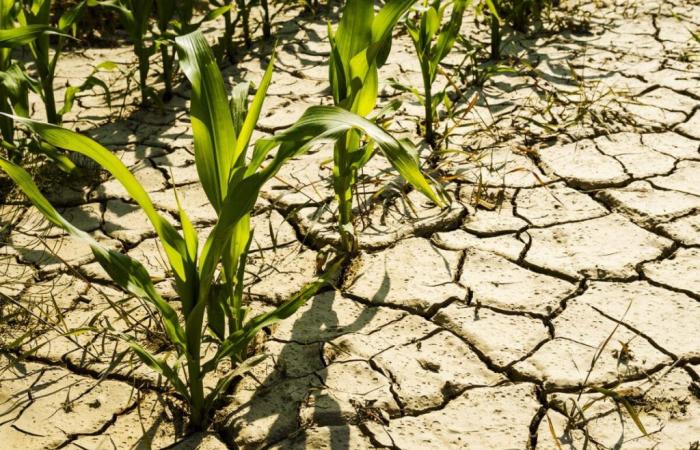Since its launch in 2008, the Green Morocco Plan (PMV) has been hailed for its ambitions for agricultural modernization and its role in the kingdom’s economic growth. The project made it possible to increase productivity and boost Morocco’s agricultural exports, while placing agriculture at the heart of the national development strategy. However, as drought becomes a recurring threat and Morocco faces unprecedented water stress, the PMV is now raising criticism over its environmental sustainability.
One of the great successes of the PMV is to have driven the modernization of irrigation systems. In particular, drip irrigation, touted for its effectiveness in saving water, has seen its use expand spectacularly. According to figures from the Ministry of Agriculture, more than 900,000 hectares of agricultural land were irrigated via this system in 2020, a figure significantly increasing compared to pre-PMV.
However, this modernization does not concern all Moroccan agriculture. If large farms, often oriented towards export markets, have benefited from subsidies and aid to modernize their equipment, small farmers have often been left behind. However, it is the latter who find themselves on the front line facing the challenges of lack of water.
In addition, although the drip system allows better control of water use, it does not solve the problem of overexploitation of groundwater. In regions like Souss-Massa, where export crops (avocados, citrus fruits, etc.) are water-intensive, groundwater continues to be emptied at a worrying rate. A recent investigation revealed that the water table level has fallen by several meters in recent years, threatening the ecological balance of the region and the future of its inhabitants.
If the Green Morocco Plan has largely favored the development of high value-added crops, particularly for export, this has sometimes been done to the detriment of sustainable management of water resources. Key products such as tomatoes, citrus fruits and even melons, intended for European markets, require considerable quantities of water. It is estimated that a kilogram of tomatoes produced in a greenhouse requires between 70 and 100 liters of water, a quantity that certain Moroccan regions can no longer afford in a context of scarcity of water resources.
Paradoxically, while Moroccan agriculture has made leaps forward economically, the country is today one of the most vulnerable to water stress. The 2018 Court of Auditors report also pointed out the flaws of the PMV in terms of water management, emphasizing that the expansion of water-intensive crops and the absence of strict regulation of the use of resources water threats threaten the long-term viability of the agricultural sector.
One of the promises of the PMV was to reduce inequalities in the agricultural sector. The second pillar of the plan, dedicated to solidarity agriculture, was intended in particular to support small farmers in marginalized regions. However, it is clear that the results are well below expectations. Small farmers, particularly in the arid areas of southern and central Morocco, continue to suffer from lack of access to water and modern infrastructure.
In the absence of regular rainfall, farmers in these regions are turning to groundwater to irrigate their land, which only adds pressure on already depleted resources. Furthermore, faced with the drop in water tables, small farmers do not have the financial or technical means to drill more or invest in more water-saving irrigation solutions.
The dependence of these small farmers on natural resources is such that some have been forced to abandon their land or migrate to urban centers, fueling a worrying rural exodus.
Aware of the growing criticism and the water challenges that arise, the Moroccan authorities launched the Generation Green Program in 2020. Successor to the PMV, this new plan displays ambitious sustainability objectives, with particular emphasis on the rational management of water resources. The program promises a transition to less water-intensive crops, better reforestation and increased support for ecological agricultural practices.
However, this new program will have to face a complex reality. How can we reorient a sector that largely depends on agricultural exports towards practices that are more respectful of water resources? The challenge is immense, and the solutions will not only be technological. They will also involve profound reforms in water governance, as well as more equitable support for small farmers, often the most vulnerable to climate fluctuations.
Ultimately, the Green Morocco Plan undoubtedly marked a turning point for Moroccan agriculture, but it also showed its limits in the face of environmental challenges. As water stress becomes a crucial issue for Morocco, agricultural modernization can no longer be carried out to the detriment of natural resources.
It is urgent to rethink the Moroccan agricultural model to guarantee both its environmental sustainability and its social justice. The question of water, more than ever, must be at the center of this reflection.
Ayoub Bouazzaoui
Share this article:







